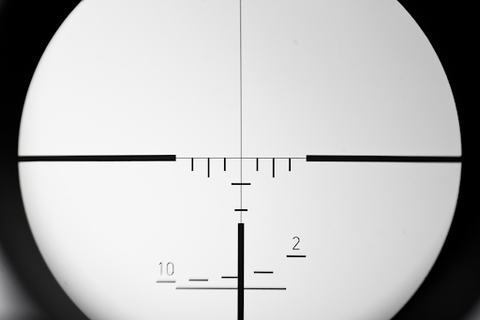Gun sights are a tool that shooters use to increase the accuracy of their shots. They can be used for hunting, target practice, and even self-defense. With so many options, choosing the best gun sight could be challenging if you're new to shooting a firearm. If you need help making a decision, scroll down below.
Types of Gun Sights
Before deciding which gun sight is the best, let's look at the types of gun sights:
1) Iron Sights or Open Sights

Credit: Envato Elements/ svitlanah
An iron sight or an open sight is the oldest type of optical sight that is used on most rifles and handguns. These sights are made of metal and consist of a front and rear sight. The function of rear sights in iron sights is to adjust windage. It consists of a kind of glass and looks like a notch in a rectangle. The front sight on the other hand helps point the gun. It is located at the end of the barrel.
The disadvantage of using iron sights is that they don't have any magnification and might be challenging to operate in dim light. The upside is that, because of their simple design, you can use them while keeping both eyes open. They are favored by hunters searching for a low-maintenance sight since they are incredibly durable and don't use batteries to work.
2) Peep Sights

Credit: Envato Elements/ kostinat
Peep sights are very similar to iron sights. With a peep sight, shooters can also aim using a rear and front component, just like with an open sight. However, there is a distinction in how the rear appears. Instead of a notch, this type of sight has a circular "lens" that you look through. Compared to an open sight, a peep sight offers greater precision due to its circular lens design.
3) Telescopic Sights

Credit: Envato Elements/ ORCEARO
A telescopic sight resembles a telescope in design. The lens of these sights helps the shooter see the distant target more clearly, and a reticle in the middle of the sight shows the shooter where to aim. Since these types of sights allow you to hit your target from a distance of several hundred feet, they are rarely used in self-defense. Instead, they are most commonly used by hunters, snipers, and target shooters.
4) Reflex Sights or Red Dot Sights

Credit: Envato Elements/ guyswhoshoot
Reflex sights are optical sights that project a red dot onto a semi-reflective lens. They are commonly known as a red dot or micro red dot sights. These types of sights are great for beginner shooters who want to aim more quickly and accurately. It permits aiming while keeping both eyes open and focused.
5) Laser Sights

Credit: Envato Elements/ Getmilitaryphotos
Laser sight uses a red or green laser beam or laser pointer to hit the intended target. These sights are excellent for those who are learning to shoot and are still honing their sight alignment. But if you've never shot before, it's not a good idea to use laser sights since relying too heavily on one will make it challenging to hit targets without one.
6) Holographic Sights

Credit: Envato Elements/ svitlanah
A holographic sight has a holographic picture positioned in the middle of two lenses. It's basically a more effective red dot sight. These sights are widely used by modern armies around the world and are typically seen on submachine guns and assault rifles.
The main benefit of holographic sights is that, unlike reflex sights, they don't alter depending on where your head is and are typically extremely accurate and precise. However, they are far more expensive.
7) Fiber Optic Sights

Credit: Envato Elements/ FabrikaPhoto
Fiber optic sights have strands that are covered in a fluorescent coating that refracts light inward. The light is gathered by the strands and is projected towards the ends, creating a dazzling sight that is visible in both daytime and some low-light situations. The obvious drawback of using these sights is that they may not be the best sight to pick for self-defense.
8) Thermal/Infrared Optics or Night Sights

Credit: Envato Elements/ NomadSoul1
Night sights combine an aiming reticle and a small thermographic camera to reconstruct an image of the target. These types of sight can be used for smaller and larger weapons. Since they are so useful at night, night sights are excellent for hunting nocturnal animals.
Which Sight Should You Choose?

Credit: Envato Elements/ FabrikaPhoto
The type of sight that you choose will depend on the purpose that you want to use it for. If you're going to shoot at closer ranges and want to improve your accuracy, consider choosing an iron or peep sight. If you're going to use your sight for hunting, consider choosing a telescopic sight. Lastly, if you want to choose a sight for shooting at close to medium ranges, consider choosing a reflex sight or laser sight.
Summary
There you have it. We hope that this article has helped you understand the different types of gun sights and which one you should choose. Since you're new to shooting, you're probably going to need targets to help you improve your aim. If you're searching for targets that can last your entire shooting practice, check out EasyShot shooting targets. From silhouette to bullseye targets, we have everything you need to perfect your aim.

